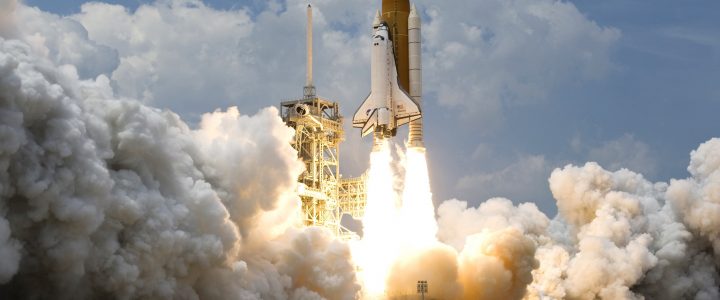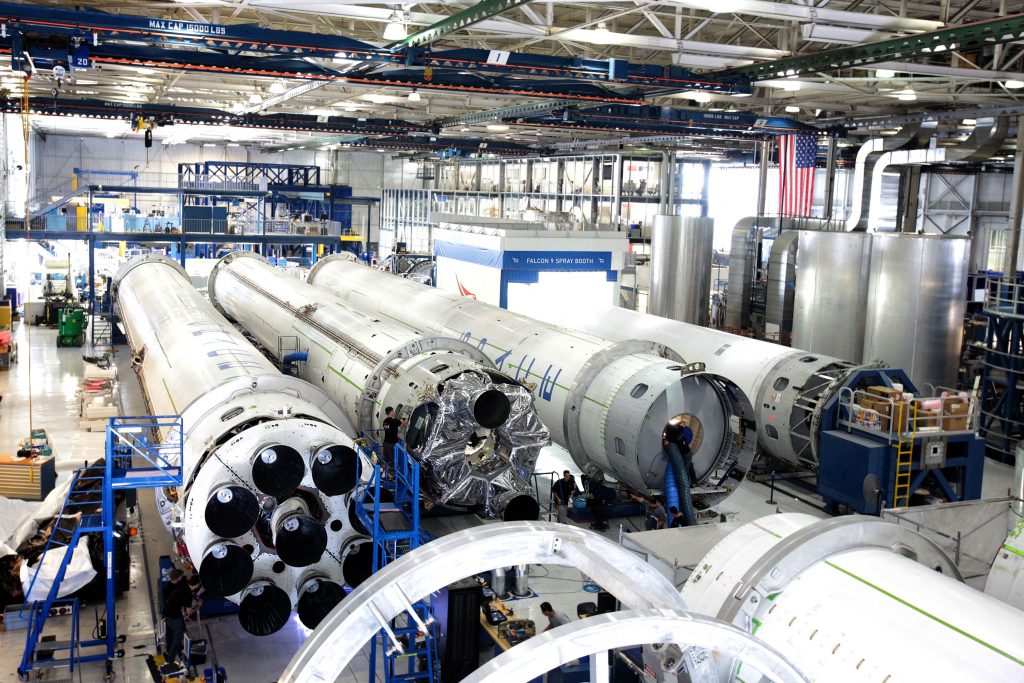
Last week we were asked about the future of Space Travel. More specifically, how sustainable are long-term space flights. Each launch requires an enormous amount of propellant to create the thrust for the large payload, and current technology has nothing on the horizon with the potential to compete.
Looking at the new SpaceX Falcon Heavy, that now delivers the largest payload into space (Saturn V had a larger capacity but took its last flight in 1973), we can analyze a high-level carbon footprint of each round trip.
Analysis of the design, fabrication, testing and operations would require access to SpaceX records (and a lot of free time) in order to accurately assess, and we hope in the future this will be possible, but if we compare this to analysis of the aviation industry we can estimate a ballpark figure.

We won’t know exactly how many launches the Falcon Heavy will record over the programs lifetime but looking at the goals of launching every 2 weeks, the potential of adding the Mars Dragon and using a total life span of 15 years, the final contribution for the support infrastructure will be no more than 200 tons of CO2 per launch.
The design of the Falcon Heavy is the combination of 3 first stage Falcon 9 rockets (Core & Heavy Boosters), housing 27 Merlin engines and aluminum-lithium alloy tanks containing liquid oxygen and rocket-grade kerosene (RP-1) propellant.

| Propellant | LOX | RP-1 | |
| Falcon 9 | 411,000kg | 287,430kg | 123,570kg |
| Second Stage | 107,500kg | 75,200kg | 32,300kg |
| Total | 1,340,500kg | 937,490kg | 403,010kg |
LOX = Liquid Oxygen, RP-1 = Rocket Propellant 1 (Kerosene)

Not all of the burnt propellant will turn into CO2, however after a month the CO left in the atmosphere will oxidize further to become CO2. So taking a complete propellant burn we find the carbon emissions for each flight at 1284 Metric Tons of CO2 directly, increasing to 1421 Metric tons when considering the additional CO left in the atmosphere, and 1621 Metric tons after including our ballpark design, fabrication, testing and operations emissions.
Taking RP-1 as CnH1.953n and atomic weights (~C=12, H=1) to find the amount of carbon in the propellant to be burnt. The same amount of standard Jet Fuel where kg-CO2 / kg-fuel = 3 is within 5%.
The total payload for this calculation is 64 metric tons (141,000 lbs.) sent into Low Earth Orbit. Other flights: highly elliptical orbit (HEO), geosynchronous transfer orbit (GTO), and Earth-escape trajectories will use more propellant.
For a year of space travel, that would require 49,600 forest acres to sequester the carbon from the atmosphere. Three times less than the carbon footprint for the US President in 2018. Some more perspective, it would take selling 183 Tesla Model S to save that amount of CO2 emissions over a standard combustion vehicle in one year. In 2018, Tesla delivered 244,920 vehicles removing nearly 2 million metric tons of CO2 emissions from the atmosphere in a year.
Most recently, German researchers have used sunlight to convert carbon dioxide (CO2) and water to produce kerosene. By concentrating solar energy to synthesize liquid hydrocarbon fuel from water and CO2, researchers from the ETH Zurich have the potential to revolutionize the space industry by capturing emissions from fossil fueled combustion and repurposing for secondary use that cuts CO2 emissions by 90 percent. This could be a huge advancement for an industry reliant on the high thrust of combustion.
The advancements in space technology will be significant for our future. NASA has been a significant contributor and innovator to technologies we use on Earth.
So any further examination of the space industry is not required. While not sustainable in the any sense of the word, considering the minimal footprint on a global scale, we should be looking at other industries to make a greater impact.




